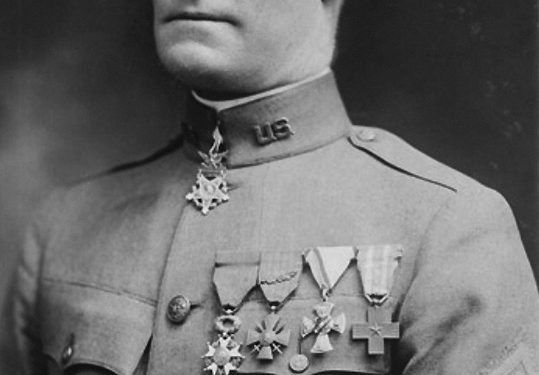More than 3,500 Medal of Honor recipients have served our nation above and beyond the call of duty. Of these, one of the more awe-inspiring stories is that of U.S. Army First Lieutenant Samuel Woodfill. He was considered the foremost soldier of World War I by no less an authority than General of the Armies John J. Pershing.
Born in Jefferson County, Indiana, on Jan. 6, 1883, Woodfill grew up an avid outdoorsman, hunter, and skilled marksman. In 1901 he enlisted for what would become a career in the U.S. Army. He served in the Philippines during an insurrection against the American occupation, and then was assigned to outpost duty in Alaska. Undaunted by the cold northern winters, Woodfill saw this posting as a dream come true because it allowed him to explore the wilderness and hunt big game.
Afterwards, Woodfill fought along the Mexican border, working with Pershing to track down Pancho Villa. By the time he was called to serve in France during World War I, Woodfill had attained the rank of lieutenant and was a seasoned soldier. Shortly before leaving for deployment overseas, he married Loreena Blossom, a woman who stood by him through thick and thin for decades to come.
In October 1918, the American Expeditionary Forces under Pershing were engaged in the Meuse-Argonne Offensive, which remains to this day the largest and bloodiest battle in American military history. Woodfill’s unit, the 5th “Red Diamond” Division, was engaged in fighting for control of the central German defensive strongpoint in this sector along the Heights of Cunel and Romagne. Combat was brutal and often hand to hand. Watch out if you walk these battlefields today – the ground is still strewn with equipment and ordnance left over from the fighting over a century ago, including unexploded grenades and artillery shells!
On the morning of Oct. 12, Woodfill led his men through heavy fog toward the enemy positions, but a heavy German artillery and machine gun barrage pinned down everyone except him and two other soldiers. Continuing the advance, he encountered a series of well-entrenched German machine gun nests. Instead of pulling back and calling for infantry and artillery support, Woodfill ordered the two other soldiers to stay put, and moved ahead to assault the German positions alone.
In an incredible display of valor, he used his skills as an outdoorsman to use the terrain in order to move undetected close to the enemy positions. His great skills as a marksman then came in handy as he killed several Germans with his rifle and pistol at close range as he destroyed one machine-gun nest after another. Assaulting one emplacement, Woodfill defeated an enemy officer in hand-to-hand combat. Finally, he jumped into a rifle pit and engaged in a melee with enemy soldiers that ended with Woodfill dispatching two of them with a military pick that he found lying at the bottom of a trench. Single-handedly, the lieutenant played a major role in destroying a vital German strongpoint, allowing his comrades to advance and saving dozens of American lives.
Suffering from a shrapnel wound in the thigh, as well as the effects of exhaustion and poison gas inhalation, Woodfill was evacuated from the front. Pershing personally awarded him the Medal of Honor in 1919. He received further awards from other nations, including France’s Croix de Guerre, and so became among the more decorated American soldiers of World War I. In November 1921 Woodfill was selected as the leading pallbearer at the internment of the Unknown Soldier at Arlington National Cemetery.
Afterwards, Woodfill returned to the life of a humble farmer in northern Kentucky, but he returned to service as a major in World War II to encourage young Americans to enlist in defense of their country. He died in 1951 and is buried at Arlington National Cemetery. Asked about his Medal of Honor action, Woodfill said, “My only regret is that I could not have done more.”
















